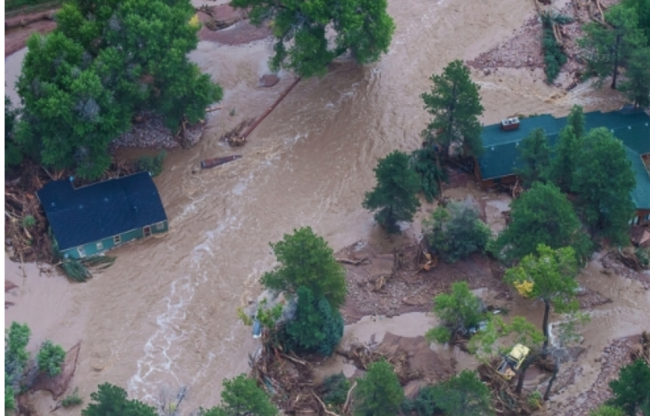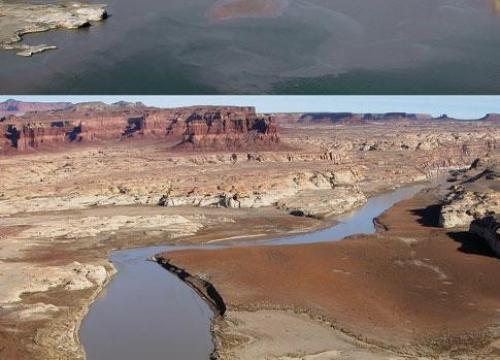A Changing Climate: Understanding Floods in Colorado
Students build an understanding of flooding in Colorado using multiple data sources in a jigsaw format.
Context for Use
This lesson is best used as part of the HEART Force curricular unit. Potential lessons to follow include:
This lesson could also be a stand-alone lesson to introduce students to flood in Colorado.

Aerial scene of Big Thompson Flood of 2013 along Hwy. 34
Photo Credit: U.S. Air National Guard, Capt. Darin Overstreet
Goals Header
What Students Will Do
- Analyze flood data to identify patterns of flood history and risk in Colorado.
Communicate information about historic causes and effects of floods in your community. Explain what community members should do to be safe in the event of a flood.
Teaching Materials
User note: To make an editable copy of the teaching materials in Google Drive, select File > “Make a copy”. This will make a copy for you to save to your own drive and edit as you see fit.
Description
In this lesson, students will build understanding about floods in Colorado through the following learning activities:
- Part 1 – Engage (20 minutes) An Introduction to Flood Concepts & Case Study
As a class, watch news clips about floods in Colorado and have a brief class discussion.
- Part 2 – Explore (50 minutes) Flood Data Analysis Jigsaw
In groups, analyze flood information and data to build understanding of the causes, impacts, locations, and frequency of floods.
- Part 3 – Explain (65 minutes) Community Flood Risk & Response
In teams, students create a local news story for their community to share information about flood causes and impacts, and how people prepare for, respond to, and rebound from floods.




